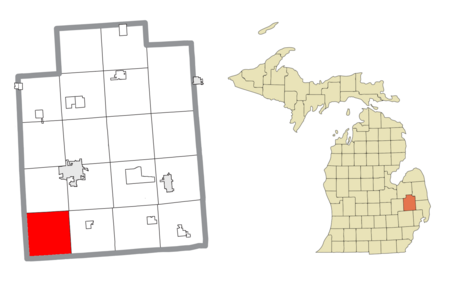Louhelen Baháʼí School is one of three leading institutions owned by the National Spiritual Assembly of the Baháʼís of the United States. The others are Green Acre Baháʼí School and Bosch Baháʼí School.
Louhelen is near Davison, Michigan.
The school property was bought for Baháʼí purposes in 1930 by the new married couple Lou and Helen Eggleston and they hosted a picnic that year. The first school session was held in 1931 and was run via a committee organized by the national community through the 1930s and 40s. Innovations in the period were adding distinct sessions for youth and junior youth and practicum laboratory sessions. All the while the material setting was also advanced. In 1947 the Egglestons donated the school property valued over $50k and the National Spiritual Assembly of the US bought the residence which was organically part of the school. The work of maintaining the site was then kept by two committees and on-site managers though the Egglestons continued to associate with the school into the early 1950s. Lou died in 1953 while their daughter assisted the school in 1955. For a period of two years, however, the school was shut down as were all the Baháʼí schools, in 1949 and 1950 to conserve resources for the cost of finishing the Baháʼí House of Worship in Wilmette and to clearly establish the thrust of work of promulgating the religion in Latin America.
Activities resumed and continued through the 1960s into the early 1970s. However a safety situation developed and in 1974 the school was closed by the national assembly. An investment of $1.8 million followed with plans drawn up and construction projects carried out from 1980 to 1982 and the school re-opened with some buildings restored, others replaced and the mission more explicitly being a residential college and conference center.
A number of subject areas have been advanced across the periods of the school. One was race unity, a subject at the school explicitly since 1932 when Maye Gift's talks on race led to a compilation that was well received in multiple reprints. The school welcomed inter-racial couples, members of diverse races, and a project supporting black students going to attend integrating schools in Greenville, SC, in 1964 was undertaken and a socioeconomic development program Understanding Racism initiative in 1986. Books were also developed from other presentations at the school - some of Stanwood Cobb's work was gathered from working for a school session, and the text of The Divine Art of Living evolved from presentations. Moslem and Christian subjects were studied early on. Later a residential college program supported students who stayed at the school and were students in area colleges. Scholars of the religion gathered annually at the school in the form of the Association for Baháʼí Studies and the Irfan Colloquia and attracted performers like Andy Grammer, and Kevin Locke. The school also supported a grandparents-and-grandkids program of learning indigenous Indian cultural history. Jr youth projects have been posted to YouTube.








